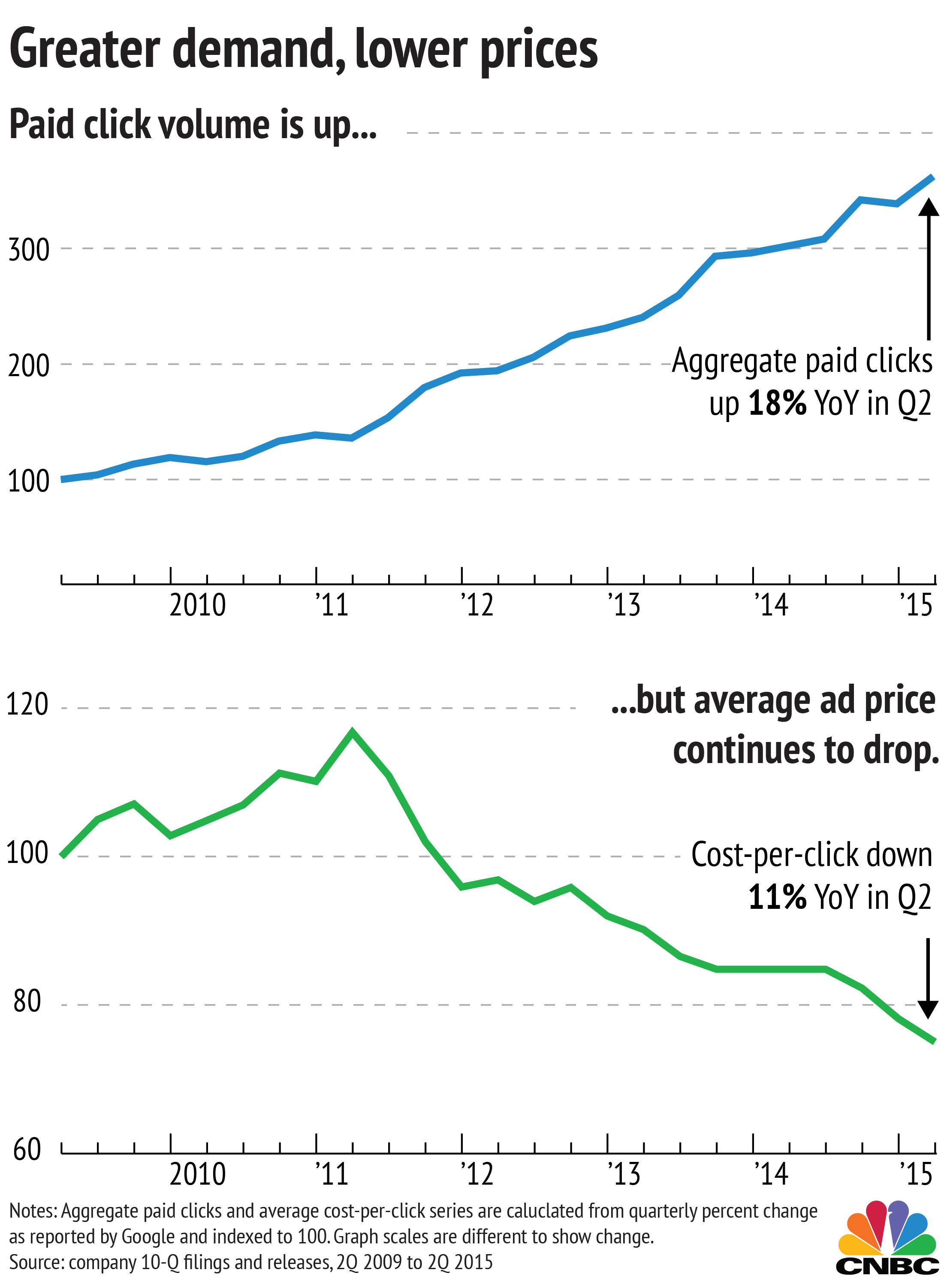If mobile ads—which tend to fetch lower prices than desktop ads—were ever driving the CPC decline, that no longer seems to be the case.
According to Porat, mobile CPCs are growing, closing the gap with desktop. Digital performance marketing agency iProspect saw a similar trend with its client set (mostly large U.S. advertisers) last quarter—with mobile CPCs passing 70 percent of desktop CPC compared to about half the value last year. CPC for paid search overall was also up year over year.
"The space as a whole was valuing [mobile] less," said Jeremy Hull, director of bought media at iProspect. "Google is providing the tools to measure return on investment, and increasing CPCs mean that advertisers are trusting and seeing more value from those types of ads."
A report released last week by Adobe Digital Index also found higher mobile CPC compared with last year. Both Hull and Adobe researchers expect mobile to outpace desktop in the next year. Demand for YouTube ads will also grow as advertisers learn how to use them effectively, said Hull.
"You only have a few seconds to get someone's attention or they're going to skip—this isn't just like buying TV space on a new channel, it's a different medium," he said. "I think the CPCs are still low because not every brand is doing that yet. The low CPCs to me just scream opportunity."
As for the average CPC reported by Google, Hull would like to see a more specific breakout, but he understands why the search giant lumps all its numbers together.
"Google is known for its moonshots, and even in the ad space, Google is constantly testing new ideas," he said. "You could spend all week just debating how to break it out, and the breakout would change at least twice a year as products evolve."




